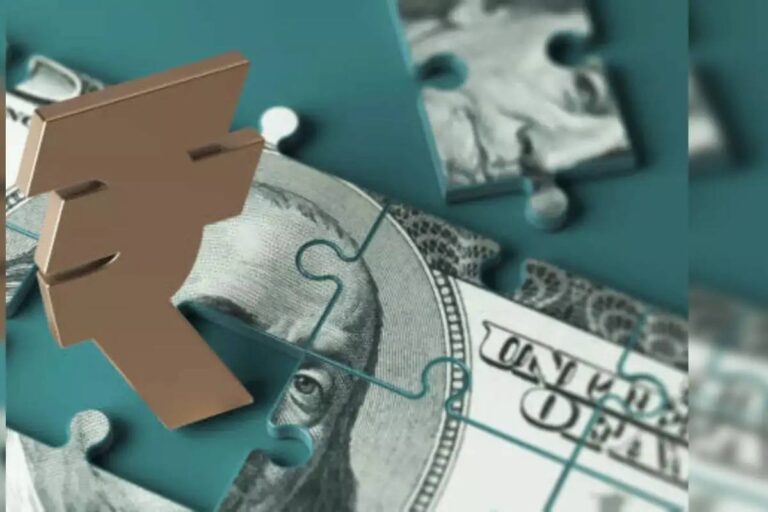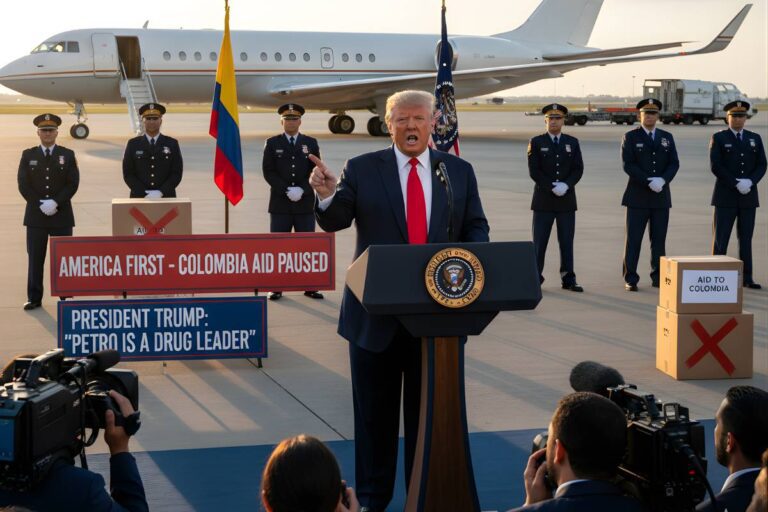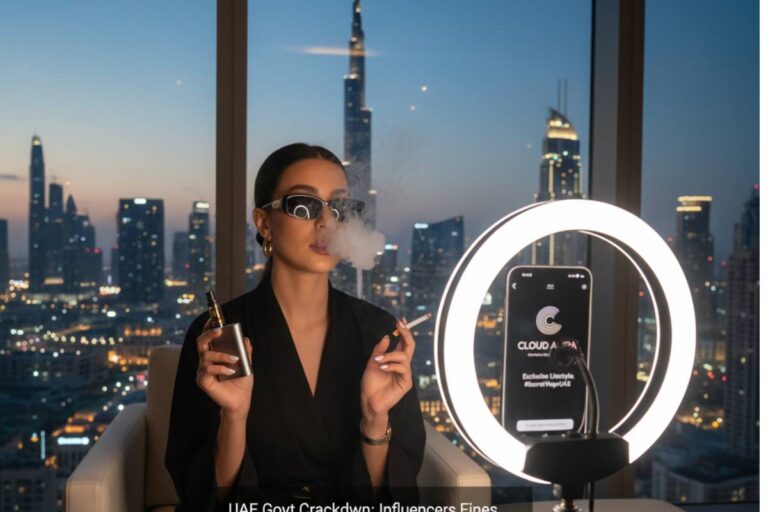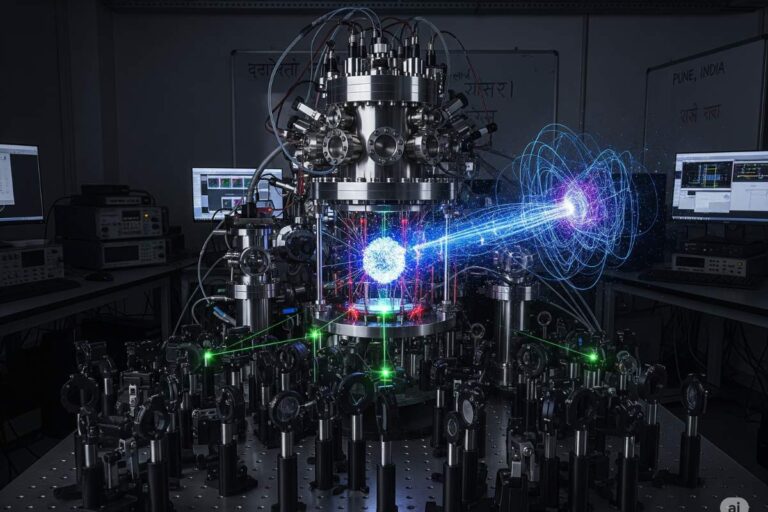The world today is gravitating towards a cleaner future, and industries across the globe are realizing the urgency of change. Of them, the steel industry, a major source of carbon emissions globally, is also witnessing an epoch-making shift. At the helm of this transformation from the front is the JSW Group, an Indian conglomerate that has made a historic investment of more than ₹50,000 crore (around $5.8-7.0 billion or €4.6-6.5 billion) to build a world-class green steel manufacturing plant. This ambitious initiative is strategically geared toward filling the growing demand for low-carbon steel in the European markets. This is not just an expansion; it’s a deliberate strategic step by JSW Group in direct reaction to the European Union’s visionary Carbon Border Adjustment Mechanism (CBAM) and the increased European demand for sustainably produced products.
Steel made with a carbon footprint one-fifth of the present average for steel made in India is the ambitious aim of JSW’s green venture. Although the first operations will be fueled by natural gas, the plant is being carefully designed to allow for easy conversion to hydrogen-based production processes in the future, reflecting a high level of commitment to long-term environmental stewardship. The repeated reporting of the huge investment sum, the focused annual production capacity of 10 million tonnes, and the staunch commitment to the European market in many credible news sources attests to the deep strategic significance of this project to the JSW Group. This consistency in information brings out the importance JSW attaches to this project as a key element of its future expansion and its desire to establish itself in the international market.
The Green Steel Imperative: Europe’s Decarbonization Drive
Europe is leading the global drive towards decarbonization, with ambitious climate goals and tough regulations to cut greenhouse gas emissions across all sectors by a considerable amount. This pressure is being led by global environmental treaties and strong domestic policy regimes.
The steel sector, identified as a significant worldwide producer of greenhouse gas emissions, is increasingly under pressure to move to more environmentally friendly manufacturing practices because of its high energy usage and direct carbon dioxide emissions.
One of the key components in this shift is the European Union’s Carbon Border Adjustment Mechanism (CBAM), which came into effect from 2023 and will see its full cost implications implemented from January 1, 2026. CBAM will place carbon-based tariffs on the importation of carbon-intensive products, such as steel, cement, and fertilizers. This system acts as a strong stimulus for manufacturers beyond the EU to greatly minimize their carbon footprint in order to keep their competitive advantage in the European market. This changing regulatory context has given rise to a strong and fast-expanding demand for green steel – steel made using processes that lead to significantly lower carbon emissions than traditional production pathways. This demand is reinforced by higher sustainability requirements being imposed by downstream sectors like automotive and construction in recent years. To satisfy this demand, several new technologies and methods are being developed for producing green steel. These are:
- Hydrogen-based Direct Reduction (DRI): Using hydrogen as a reducing agent rather than carbon.
- Greater use of steel scrap in Electric Arc Furnaces (EAFs): Recycling steel to minimize virgin material requirements.
- Adoption of Carbon Capture, Utilization, and Storage (CCUS) technologies: Capturing and storing, or reusing carbon emissions.
The world market for green technology and sustainability in the production of steel is expected to grow significantly to more than $89 billion in 2032, with a 20.9% compound annual growth rate from 2024 to 2032. The projection highlights the vast economic opportunity of the move towards green steel.
The EU regulatory landscape, specifically the rollout of CBAM, is not just a likely hurdle for global steelmakers but a significant market opportunity for those who can offer low-carbon substitutes.
JSW’s investment in green steel manufacturing, especially for the European market, seems to be an anticipatory and timely step to take advantage of this changing market dynamic.
By positioning itself as a primary source of green steel, JSW is looking to supply European industries that are increasingly coming under pressure to minimize their carbon footprint and are looking for cost-effective, sustainable material sources.
JSW’s Bold Initiative: Investing in Europe’s Green Steel Future
JSW Steel, one of the major subsidiaries of the JSW Group and India’s second-largest steel manufacturer, has stated its plans to invest more than ₹50,000 crore (about $5.8-7.0 billion) in a stand-alone green steel manufacturing plant targeting the European market.
This hefty investment, widely reported by several news outlets, reflects the strategic significance of this venture for the group. The new plant is designed to have a huge annual production capacity of 10 million tonnes, reflecting JSW’s aspiration to be a leading player in the European green steel value chain. The investment will be strategically allocated over the next three to four years, indicating a phased development and implementation strategy for this mega project.
The site for this ambitious project will be Salav in Maharashtra’s Raigad district, where JSW Steel already has established operations.
This will be a brownfield expansion, with the possibility of synergies and taking advantage of existing infrastructure at the Salav location, which already employs Direct Reduced Iron (DRI) and Electric Arc Furnace (EAF) technologies. The green steel plant will be conducted under the ambit of JSW Steel’s fully owned subsidiary company, JSW Green Steel. JSW Green Steel was incorporated during February last year with a particular mandate of green steel production focus. JSW had, earlier to this declaration, presented plans to scale up its green steel capacity in the Salav plant in incremental terms to 4 MTPA. This fresh, much bigger investment of ₹50,000 crore for a 10 MTPA capacity is a huge ramping up of JSW’s green steel plans and a more focused approach towards the European market.
The strategic choice of JSW Group to set up a separate subsidiary, JSW Green Steel, reflects the deep significance and possibly unique operating requirements involved with their green steel plans. Such organizational alignment provides more specialized management treatment, possibly the potential for forming specialty expertise and strategies specific to this new field. Additionally, having a subsidiary company would enable tapping into separate channels of financing sources, including available green sources, that focus on environmentally sound ventures apart from their traditional steel ventures.
Why Europe? Decoding JSW’s Green Steel Strategy
The main driver of JSW’s huge investment in green steel manufacturing for the European market is the European Union’s Carbon Border Adjustment Mechanism (CBAM), which will levy tariffs on carbon-intensive steel imports. By producing green steel with significantly reduced emissions, JSW hopes to avoid these looming tariffs and so achieve a huge competitive advantage in the European market by supplying a more economically viable low-carbon substitute over producers who will face CBAM charges. Given the full financial implications of CBAM taking effect from January 1, 2026, JSW’s three-to-four-year projected investment horizon seems strategically well-timed to benefit from this regulatory change.
Outside of regulatory compliance, there is an evident and increasing European demand for products made using sustainable methods, such as steel. This demand is driven both by strict regulatory mandates and a growing environmental awareness among European consumers and industry. European companies in many sectors are actively pursuing low-carbon materials to mitigate their own indirect (Scope 3) emissions and to achieve their internal and external sustainability commitments.
In addition, JSW Group has defined its own holistic sustainability objectives, including the commitment to making a meaningful reduction of its overall carbon footprint.
This investment in green steel production directly aligns with their overall commitment to sustainability and their strategic shift towards a low-carbon economy. JSW Steel has set an ambitious goal of achieving net neutrality in carbon emissions by 2050, a long-term goal that requires significant and strategic investment in green technologies and new production methods. Broader still, JSW hopes to boost India’s competitiveness in the global market in the steel industry by gaining access to high-demand markets for low-carbon products like Europe. This strategic move may well place India as a global leader in green steel exports, thus broadening its steel export base from its classical markets.
Interestingly, JSW Group Chairman Sajjan Jindal has also expressed concerns over the possibility of steel dumping by nations such as China and Vietnam into the Indian domestic market. By strategically targeting the European market with a differentiated green steel product, JSW may be adopting a hedging strategy against such pressures in the domestic market by targeting a unique customer base with certain and strict environmental needs. JSW’s strategy seems to be multi-pronged. While complying with and reaping the benefits of the EU’s CBAM is a key propellant, the investment also strategically sets the company up to access an expanding and potentially profitable market for environmentally friendly products. This forward-looking approach complements JSW’s focus on sustainability, which can positively contribute to its brand reputation and investor attraction, especially in the European scenario wherein environmental concerns are more highly valued. In addition, by focusing on exports to Europe, JSW may be tactically diversifying its market exposure, thus decreasing its dependence on the potentially risky Indian steel market and hedging against the risks of steel dumping from other Asian countries.
The Green Technology Behind JSW’s Low-Carbon Steel
The new green steel manufacturing facility to be developed in Salav will use natural gas as its main source of energy in the first instance. The natural gas burning produces far less carbon dioxide than older coal-based practices, which is a crucial bridging technology in getting steel making down to lower emissions. Nevertheless, JSW is proving proactive in guaranteeing that the factory will have the proper equipment installed in place so that they can shift production processes over to hydrogen-based approaches at a future point in time. This forward-looking strategy is in line with hydrogen’s long-term role as one of the pillars in decarbonizing the steel sector and the wider energy system.
Green steel at this plant is estimated to deliver a carbon intensity of just one-fifth that of India’s current average for steel produced. This significant decline indicates a marked deviation from traditional coal-based blast furnace practices, which are carbon-emission intensive. To put this into perspective, Indian steel industry, which has relied heavily on coal-fired blast furnaces, has a carbon footprint of 2.5 to 2.6 tonnes of CO2 emissions per tonne of steel produced, while the global average is 1.85 tonnes. Attaining a carbon intensity of one-fifth of the present Indian average would mean about 0.5 tonnes of CO2 per tonne of steel, which is a major step towards greener steel production.
JSW Steel’s US operations already employ the Electric Arc Furnace (EAF) process along with Consteel™ technology.
This technology is known for its energy efficiency and reduced carbon footprint, especially when run on renewable energy sources. It is most likely that the new Salav plant will also use EAF technology, possibly in conjunction with Direct Reduced Iron (DRI) made initially from natural gas and later switching to hydrogen. JSW has also investigated applying Corex technology for hot metal making, which has environmental benefits over conventional blast furnaces by using low-grade coal directly and avoiding coke making. The current steel plant at Salav is already using DRI and EAF technologies, marking JSW’s comfort and experience with these manufacturing techniques.
In addition to this, JSW is seriously exploring the application of green hydrogen as a main feedstock to produce steel, and a pilot project has been planned at its Vijayanagar plant. This project serves as part of a wider initiative in the JSW Group towards exploring and embracing hydrogen-based steelmaking. JSW Energy, which is an affiliate company, also intends to provide green hydrogen to JSW Steel. Besides fuel switching, JSW is also looking at CCUS technologies as part of a partnership with BHP. While the initial priority for the Salav plant would seem to involve shifting from coal to natural gas and subsequently hydrogen, CCUS might be an ultimate longer-term plan for taking even greater levels of emissions cuts, especially if blast furnace technology continues to be leveraged for aspects of production.
JSW’s green steel production strategy appears to be a thoughtfully planned phased implementation. They are beginning with natural gas, which is a huge carbon emissions reduction compared to their current dependence on coal-based blast furnaces. At the same time, they are planning strategically for future transition to hydrogen, showing a commitment to going to near-zero emissions in the long run. The possible application of EAF technology, taking advantage of their current experience in the US and the existing plant facilities at Salav, is also a probable and essential element of their total green steel making plan for Europe. This mixed strategy enables JSW to take concrete steps toward lowering its carbon footprint in the near term while setting itself up to take complete advantage of the developments and rising availability of green hydrogen technologies.
Europe’s Green Steel Landscape: A Market Overview
The European green steel industry is still in its initial stages of development, but is expected to see significant and steep growth, mainly propelled by severe regulatory imperatives like the forthcoming CBAM and growing downstream industry demands for low-carbon products. This expansion is also complemented by a host of national and EU-level sustainability programs and earmarked funding programs to support the shift towards a greener economy. Several leading European steelmakers are also investing heavily in green steel projects to make this transition. These include:
- ArcelorMittal: Pioneering hydrogen-based Direct Reduced Iron (DRI) production at its Hamburg plant.
- SSAB: Leading the way with its HYBRIT project that aims to produce fossil-free steel using hydrogen .
- voestalpine: Planning to commence green steel production using Electric Arc Furnaces (EAFs) from the year 2027.
- Stegra (formerly H2 Green Steel): Planning to establish large-scale green steel production plants in northern Sweden.
- Swiss Steel Group: Relying 100% on Electric Arc Furnaces (EAFs) and steel scrap.
These massive investments by major players in the European steel sector show a high level of commitment to decarbonizing their plants.
Technologies like hydrogen-based direct reduction are picking up strong momentum right across Europe, with leading projects like HYBRIT in Sweden being important demonstrations of the viability and promise of this method at an industrial scale. Many other European projects are also under active consideration to apply hydrogen DRI for steelmaking.
Electric arc furnaces (EAFs) that have recycled steel scrap as their main feedstock and which are driven by electricity from renewable sources are also becoming a major path for green steel manufacture in Europe. This is especially relevant to specialty steel manufacturers, e.g., the Swiss Steel Group, where steel’s high recyclability makes this an effective and increasingly significant means towards sustainability. Additionally, new players to the steel industry, including Stegra (previously H2 Green Steel), intend to set up large-scale green steel production facilities in areas like northern Sweden, with the vision of becoming major providers of green steel to the wider European market. The implementation of carbon pricing mechanisms and border adjustments like CBAM is expected to further stimulate the demand for and enhance the competitiveness of green steel within the European market by making carbon-intensive steel imports more expensive.
This will create a strong economic incentive for European steel buyers to increasingly choose lower-carbon alternatives, whether they are produced domestically within Europe or imported from international suppliers.
The European green steel market is in rapid transformation and becoming more competitive, with both established steelmakers and new, nimble entrants investing heavily in a broad spectrum of green steel production technologies. JSW’s success in this market will depend on several key factors, including the cost-effectiveness of their green steel offerings, the security of their supply chain, and their capacity to deliver the demanding quality and sustainability expectations of European customers.
JSW’s Current European Footprint: A Strategic Strength
JSW Group has already made its footprint in Europe through various subsidiaries, such as JSW Steel (Netherlands) B.V., JSW Steel (UK) Limited, and JSW Steel Italy S.r.l., as well as JSW Steel Italy Piombino S.p.A. These pre-existing entities indicate that the group has some degree of market knowledge and possibly set-up customer bases in the European market.
Most importantly, JSW Steel (Netherlands) B.V.
is referred to in a sustainability report.
This available operational network, especially in Italy with JSW Steel Italy S.r.l. and JSW Steel Italy Piombino S.p.A., including Piombino Logistics S.p.A. and GSI Lucchini S.p.A., would offer a solid base for the distribution, logistics, and market access overall of their newly manufactured green steel products. These existing players can already have distribution channels and infrastructure in place that JSW can leverage to good effect for their green steel business. This investment in European green steel is a strategic move that perfectly fits into JSW Steel’s long-term vision of becoming the largest steel producer in the world, with a production capacity of 100 MTPA, a far cry from its current capacity of 34.2 MTPA. Pursuing the European green steel market is an important strategic move towards achieving this ambitious global vision, while at the same time addressing a high-value market segment that values high environmental standards. In addition, JSW Group’s diversification into allied industries like the production of electric vehicle battery cells indicates a wider group-level focus on sustainability and forward-looking industries. Such diversification also generates possible synergies since the need for green steel will most probably rise with the development of the electric vehicle market in Europe as well as elsewhere. JSW’s current base of European subsidiaries, especially their presence in Italy, gives significant strategic leverage in approaching the green steel market in Europe. These incumbent players are most likely to have valuable knowledge of the subtleties of the European steel market, such as individual customer preferences, high-quality requirements, and efficient distribution channels.
By building on these pre-existing frameworks, JSW could be able to minimize the time and expense normally involved in the entry of a new international market and speed up the market acceptance of their green steel products.
The availability of established logistics and even manufacturing facilities within such subsidiaries could also ease their overall operations within the European market.
Expected Impact: A Greener Tomorrow for JSW and Beyond
This major investment is expected to significantly improve the position of JSW Group in the global steel industry, especially within the fast-growing green steel segment. It will enable the company to effectively cater to environmentally conscious customers not only in Europe but potentially in other regions as well, positioning JSW as a leading producer of sustainable steel from an emerging economy. Though the upfront cost is high, the power to charge a premium price for green steel in the European market, combined with the tactical deflection of CBAM tariffs, may translate to increased profitability for JSW Group in the future. The forecasted demand for green steel is expected to surpass supply in the early years of the transition period, potentially allowing early movers such as JSW to take advantage of beneficial pricing. The new plant, with its much lower carbon intensity (estimated at one-fifth of today’s Indian steel production levels) and the future potential for near-zero emissions through hydrogen-based production, will help reduce the JSW Group’s overall ecological impact considerably.
This is in line with the company’s stated sustainability objectives and should appeal to investors growingly concerned about Environmental, Social, and Governance (ESG) considerations. A reduced carbon footprint will also enhance JSW’s capital market access and improve its corporate reputation and image further. The ambitious scope of this project will certainly propel technological innovation within JSW Group, specifically in the arena of green steel production processes. This may create additional innovation and efficiency gains across all JSW global operations, including their current steel mills in India. The specialized knowledge and expertise acquired through this project shall serve as a core asset for future green steel projects in other global markets.
In addition, the strategic action is likely to have a profound effect on improving JSW Group’s global brand reputation as a progressive and eco-friendly steel manufacturer. This improved image can be an invaluable competitive asset in winning over customers, the best talent, and investments by stakeholders who more and more factor sustainability into their decision-making considerations. This investment is more than merely a new market expansion; it is an investment in shifting JSW Group to a distinguished leader in producing sustainable steel. This leadership role has great long-term benefits that go beyond short-term economic returns.
These are a more resilient and competitive position in a fast-changing global economy that’s moving swiftly towards a low-carbon future, better access to increasingly influential green financing, enhanced relationships with stakeholders (such as customers, investors, and regulators), and a more distinctive brand.
Broader Implications: Reshaping the European Steel Industry
JSW’s major investment in green steel manufacturing for the European market represents a surging trend of globalization in the green steel industry. It indicates the rising eagerness of global steel manufacturers, especially emerging economy steelmakers, to invest heavily in Europe to fulfill the region’s growing sustainability requirements. This surge in overseas investment would help increase competition in the European steel industry and create more competitive green steel prices that would eventually spur downstream industries utilizing this important commodity. The strategic maneuver on the part of JSW would also place even more pressure on current European steel producers to pick up the pace in making the transition to producing green steel.
To continue to be competitive in terms of pricing as well as the carbon intensity of their products, local European producers might have to substantially raise their investment in major green technologies like hydrogen-based DRI and EAFs run on renewable energy sources. Access to green steel exports from global producers such as JSW may prove to be key to enabling the European steel sector to satisfy the increasingly high demand for low-carbon steel across multiple downstream markets. These include the automotive, construction, and emerging renewable energy infrastructure sectors, all of which are under rising pressure to decarbonize the embodied carbon within their products and projects. The particular technology decisions JSW makes, specifically their expressed plans to switch to hydrogen-based production in the future, may also impact the wider use of such technologies across the European steel sector. JSW’s successful scaling of hydrogen DRI for the European market may also be a persuasive proof of concept for the scalability and viability of this technology on an international scale. Finally, the success of JSW’s ambitious project could inspire other foreign steelmakers from countries subject to similar regulatory burdens, like CBAM, to make similar investments in green steel production for the European market specifically. This could further speed up the overall transition of the global steel industry towards increased sustainability and potentially diversify the European supply chain for green steel, cutting dependence on local production alone. JSW’s investment can also serve as a strong catalyst, further driving the shift towards green steel in the European market.
By bringing in additional competition and offering an additional and considerable source of low-carbon steel, JSW may encourage a faster reaction from domestic European producers who may have been more reluctant to invest at such a large scale. The greater supply of green steel from diverse sources will also create greater choice for European producers across various industries that are actively trying to lower their carbon footprint, which could see a quicker overall decarbonization of the European economy and further the ambitious targets of the European Green Deal.
Conclusion: Forging a Sustainable Future with Green Steel
JSW Group’s large-scale investment of ₹50,000 crore in green steel manufacturing exclusively for the European market is a noteworthy step towards achieving sustainable industrial processes globally.
This development highlights the growing interconnectivity of international supply chains within the context of concerted climate action. With the push of the European Union’s Carbon Border Adjustment Mechanism and the rising market demand for environmentally friendly materials, this strategic move places JSW in a good position to adequately leverage the changing tides of the steel industry and possibly become a top producer of green steel on the European continent. While difficulties certainly lie ahead in expanding green steel manufacturing to supply world demand, making it cost-competitive, and creating solid and dependable global supply chains, JSW’s focus on ultimately making the switch to hydrogen-based manufacturing technology reflects an evident long-term strategy for reaching deep decarbonization in their operations. This major investment can potentially have a major effect on JSW Group’s market share, bottom line, and environmental impact, while at the same time making a significant contribution to the entire European steel sector’s continued transition towards a greener future and the realization of its ambitious climate goals. The success of this high-risk endeavor will be watched closely by stakeholders within the entire steel industry since it promises to offer valuable insights into the effective strategies, innovative technologies, and crucial international collaborations that will be required to reach ambitious climate targets in a historically carbon-heavy industry and navigate the rising complexities of global trade in the days of increasing carbon restrictions.
Key Highlights:
- Substantial Investment: More than ₹50,000 crore ($5.8-7.0 billion) of investment in green steel production.
- Strategic Position: Brownfield expansion of JSW Steel’s Salav plant in Maharashtra, India. Target Market: Exclusively oriented towards exports to the European Union.
- Low Carbon Intensity: Carbon emissions reduced to one-fifth of the existing Indian average.
- Technological Strategy: First dependence on natural gas, followed by a systematic shift to hydrogen-based production.
- Reaction towards CBAM: A pre-emptive response to counter the European Union’s Carbon Border Adjustment Mechanism.
- Long-Term Vision: Aligns with JSW Steel’s vision to emerge as the global largest steelmaker






















